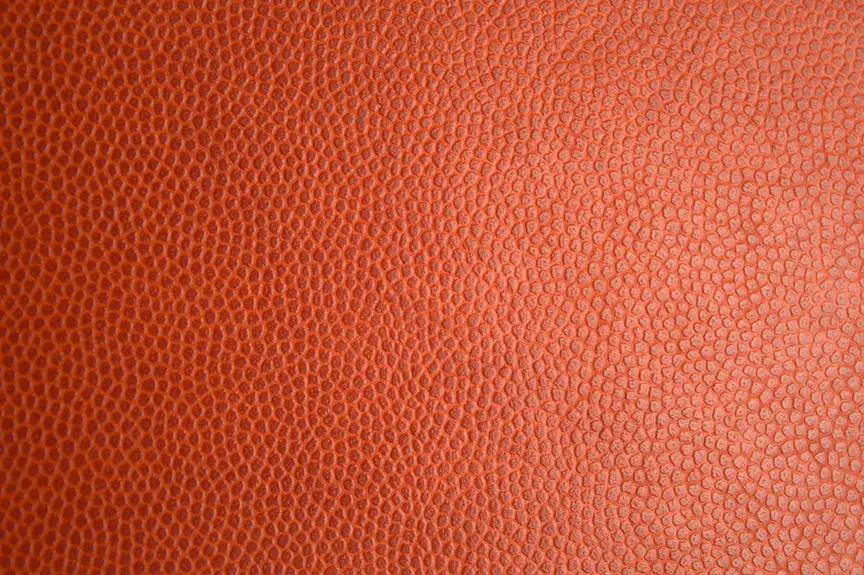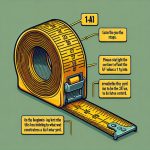When considering duck canvas fabric, you might be wondering about its average weight, which typically falls between 7 oz and 12 oz per square yard. While 10 oz stands out as a popular choice due to its balance of durability and flexibility, the best weight for your project really depends on what you're aiming to create. Different applications may call for lighter or heavier weights, and understanding these nuances can impact your final product significantly. Curious about how to select the right weight for your specific needs?
Table of Contents
Understanding Duck Canvas
Understanding duck canvas begins with recognizing it as a heavy, durable fabric often used in various applications like tents, sails, and upholstery. This fabric is made from cotton, linen, or synthetic fibers and is characterized by its tight weave. You'll find that this gives it excellent strength and resistance to wear, making it popular for outdoor use and heavy-duty projects.
One of the main reasons duck canvas is favored is its versatility. You can use it for everything from making sturdy bags to crafting awnings. Its durability means it withstands the elements, which is essential for outdoor uses. Additionally, duck canvas comes in various finishes, such as waxed or water-resistant, enhancing its functionality.
You'll also notice that duck canvas is available in multiple colors, allowing you to match it with your design preferences. Importantly, while it's tough, duck canvas remains relatively easy to work with. Sewing machines handle it well, and it takes paint and dye nicely, which opens even more creative possibilities. In essence, duck canvas is an ideal choice for projects requiring durability without sacrificing style.
Common Weights of Duck Canvas
Duck canvas typically comes in several common weights, ranging from 7 oz to 12 oz per square yard, catering to different project needs. Choosing the right weight is essential, as it affects the fabric's durability, flexibility, and overall look.
Here's a simple breakdown of common weights and their typical applications:
| Weight (oz) | Characteristics | Common Uses |
|---|---|---|
| 7 oz | Lightweight and pliable | Lining, crafts, and light bags |
| 10 oz | Balanced durability | Upholstery, tents, and bags |
| 12 oz | Heavyweight and strong | Outdoor gear, awnings, and heavy bags |
You'll find that lighter weights are easier to handle, making them ideal for detailed and intricate projects. On the other hand, heavier weights provide more robustness, perfect for applications requiring strength and weather resistance. Knowing the common weights available can help you choose the right duck canvas for your project, ensuring both functionality and style. Remember, the weight of the fabric isn't just a number—it's a crucial factor dictating how your final product will perform!
Factors Affecting Weight
Several factors contribute to the weight of duck canvas, including the thickness of the fibers, the weave density, and any chemical treatments applied during production. The thickness of the individual fibers plays a significant role; thicker fibers naturally add more weight to the fabric.
As you examine different duck canvas options, you'll notice that the weave density—how tightly the fibers are interwoven—affects the weight too. A tighter weave not only results in a heavier fabric but also enhances durability.
Chemical treatments can also impact weight. For example, if a manufacturer applies waterproofing or fire-resistant treatments, it typically adds extra weight to the canvas. You might come across varieties that feel heavier or stiffer due to such treatments.
Additionally, the width and length of the fabric will affect overall weight as well. Wider and longer pieces will, of course, weigh more. When selecting duck canvas for your project, consider these factors to ensure you choose the right weight for your needs. Understanding how each of these elements influences the overall weight will help you make informed decisions.
Best Uses for Each Weight
When choosing duck canvas fabric, it's crucial to know the best uses for each weight. Lightweight options work well for things like tote bags and lightweight curtains.
Medium-duty fabrics are perfect for items such as outdoor cushions or work aprons.
For heavy-duty needs, you'll want to turn to heavyweight canvas, ideal for tents or industrial applications where durability is key.
Lightweight Applications
Lightweight duck canvas is perfect for projects like tote bags, lightweight curtains, and outdoor gear where flexibility and ease of handling are essential. When you're looking to create a stylish yet practical tote bag, this fabric offers the ideal balance of sturdiness without the bulk. It's durable enough to hold your groceries or beach essentials while remaining lightweight for easy transport.
For window treatments, lightweight duck canvas is a fantastic choice. It allows natural light to filter through, adding warmth to your space without being overly heavy. Plus, it's easy to sew and manage, which makes your DIY projects more enjoyable.
If you're into outdoor activities, consider making gear like picnic blankets or carry bags. Lightweight duck canvas is a breathable material, perfect for keeping your items comfortable during warmer months. It also dries quickly if it gets wet, making it a sensible option for unpredictable weather.
Medium-Duty Projects
Medium-duty duck canvas is often the go-to choice for projects like backpacks, upholstery, and sturdy curtains, providing the right balance of durability and flexibility. If you're working on a backpack, this fabric offers enough sturdiness to withstand daily wear and tear while remaining pliable enough for comfortable handling. You'll appreciate its resilience when carrying your essentials around.
When it comes to upholstery, medium-duty duck canvas stands out for its capability to hold up against spills and stains. It's easy to clean and maintain, making it ideal for dining chairs or sofas that see plenty of action.
If you're sewing curtains, medium-weight canvas blocks out excess light while still allowing some brightness to filter through your space. It drapes nicely without feeling heavy, bringing both style and practicality to your home.
Whether you're crafting or tackling an interior project, medium-duty duck canvas is versatile, ensuring your creations last. Its combination of strength and flexibility opens the door for countless applications, proving it's worth considering in your next endeavor.
Heavyweight Durability
Heavyweight duck canvas is perfect for demanding applications, providing unparalleled durability and strength for items like tents, heavy bags, and outdoor gear.
It typically weighs between 12 to 24 ounces per yard, making it the go-to choice for projects that require extra toughness.
For camping enthusiasts, tents made from heavyweight duck canvas offer superior weather resistance and longevity.
They endure harsh winds, rain, and even snow, keeping you dry and comfortable.
If you're looking to create sturdy backpacks or luggage, heavyweight options provide the support needed to carry heavy loads without tearing.
Additionally, heavyweight duck canvas is ideal for outdoor furniture covers, ensuring protection against UV rays and moisture.
If you're into DIY projects, consider using this durable fabric for protective tarps or work aprons, as it handles wear and tear exceptionally well.
Whether you're a hobbyist or a professional, heavyweight duck canvas will deliver the enduring performance your projects demand.
Embrace its versatility and reliability for any heavy-duty task you take on!
How to Measure Weight
To measure the weight of duck canvas fabric, you'll need to understand the different units of measurement typically used.
We'll cover some common measuring techniques so you can get accurate results.
Let's get started on making sense of fabric weight!
Fabric Weight Units
Fabric weight is typically measured in ounces per square yard or grams per square meter, helping you understand its thickness and durability. These measurements give you a clear idea of how much material you're working with, which influences both the feel and performance of the fabric.
When you see a designation like '12 oz,' it means there are 12 ounces of fabric in a square yard. This unit of measurement is particularly common in the United States. On the other hand, in many other countries, grams per square meter (GSM) is the preferred metric. For instance, a fabric labeled 400 GSM indicates that one square meter of the material weighs 400 grams.
Choosing the right unit depends on your familiarity and needs; both provide valuable insights. Lighter fabrics, often under 8 oz or 200 GSM, are suitable for applications needing flexibility, while heavier fabrics, those above 12 oz or 300 GSM, offer durability and strength, perfect for rugged use.
Understanding these fabric weight units can significantly impact your selection process for various projects, ensuring you choose the right type for your intended purpose.
Measuring Techniques Explained
Understanding how to measure the weight of duck canvas fabric accurately allows you to make informed decisions based on your project's needs.
To begin, you'll want to have a reliable weighing scale that measures in ounces or grams, as these are the most common units for fabric.
First, cut a sample from your duck canvas, ideally at least one square yard or meter for a more precise reading. Ensure the edges are straight to avoid any irregularities that might affect the weight.
Now, weigh the fabric sample and record the weight.
To calculate the weight per square yard or square meter, you'll divide the weight by the total area in appropriate units. For example, if your sample weighs 12 ounces and measures one square yard, the weight of your duck canvas is 12 ounces per square yard.
Repeat this process with different samples, if necessary, to get an accurate representation of the fabric's weight.
Keeping track of this information helps you compare different duck canvases, ultimately ensuring you select the best fabric for your project.
Choosing the Right Fabric Weight
When selecting duck canvas fabric, consider the project's requirements, as different weights can significantly impact durability and draping. Heavier weights provide more strength, making them ideal for items like tents or durable bags. Lighter weights, however, offer more flexibility and are better suited for upholstery or clothing.
Here's a quick comparison to help you decide:
| Fabric Weight | Best For |
|---|---|
| 8 oz. | Light items like aprons and bags |
| 10 oz. | Medium applications, such as upholstery |
| 12 oz. | Heavy-duty needs, like tents |
Frequently Asked Questions
What Is the Origin of Duck Canvas Fabric?
Duck canvas fabric originates from the 18th century, specifically in Europe. It was initially named after the Dutch word "doek," which means cloth. You'll find its sturdy and durable nature ideal for various applications today.
Is Duck Canvas Fabric Water-Resistant?
Yes, duck canvas fabric can be water-resistant, especially when treated with a waterproof coating. However, not all duck canvas is inherently water-resistant, so you should always check the specific product details before making a purchase.
Can Duck Canvas Be Used for Clothing?
Absolutely, you can use duck canvas for clothing! It's durable and versatile, making it great for jackets, bags, and workwear. Just consider its weight and breathability to ensure comfort for the intended use.
How Does Duck Canvas Compare to Other Fabrics?
When comparing duck canvas to other fabrics, you'll notice it's durable, heavy-duty, and water-resistant. It excels in practicality, making it ideal for bags, outdoor gear, and work clothing, unlike softer, less resilient materials.
What Colors Are Available in Duck Canvas Fabric?
You'll find duck canvas fabric in a variety of colors, including natural, khaki, navy, black, and bright shades like red, green, and blue. This diversity allows you to choose what matches your project perfectly.
- What Is “Air Permeability” in Textiles and How Is It Tested? - June 6, 2025
- Can Fabric Treatments (like DWR) Reduce Breathability? - June 6, 2025
- Does the Color of a Fabric Affect Its Breathability? - June 6, 2025







